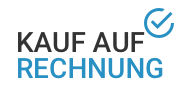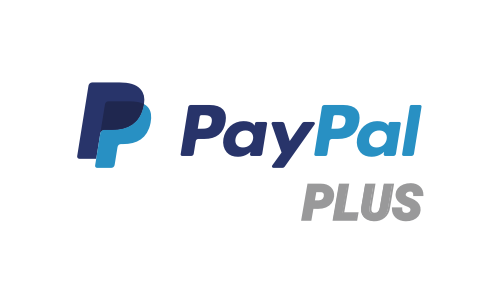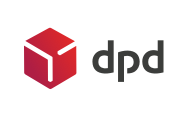Case Study: Team Building in 2 hours using only Metalog activities
We are often contacted by clients who want to drive home a certain message to their employees, but want to avoid the typical classroom setting and workshop.
One such requirement came from Dhruva Interactive, India’s leading game developer and a provider of art production services to the global games industry. The 20-year old company delivers game content creation services across various platforms and genres around the world.
The company was working closely with their team in Sweden and recognized the need to create the conditions for stronger teamwork between the two teams in India and Sweden. While the leadership of both teams had already formed strong collaborative bonds, the team members hadn’t yet had the opportunity to replicate this. The individual members of the two teams had so far only been working virtually with each other and hadn’t had the chance to meet in person.
The perfect opportunity for team building presented itself when team members from the Swedish team were scheduled to travel to India to meet their colleagues. And it was to capitalize on this opportunity that Dhruva Interactive reached out to us.
The key objective of this intervention was to enable the group to discover ways in which they could work together more effectively and take the existing trust levels up a few notches. The client was very emphatic about their specific company culture, which was fun, energetic, “young” and fast paced. A typical classroom session would not engage their people and they wanted this session to reflect the company culture while highlighting the key messages.
The group was made up mostly of individual contributors and a few people/project managers. It also included employees from the two different Indian locations where the company operated, with a fantastic mix of technical, sales, marketing and project management teams.
We had just 3 hours with the group and our objective was to get them to start thinking about the potential challenges they would face working with each other as well as to develop some strategies to meet these challenges. For us, it was a simple design choice: we had to use the right mix of activities to bring this session alive and drive home the message. We use a range of Metalog activities in most of our sessions, but these are generally interwoven with other learning methodologies such as lecturettes, case studies, role plays and exercises. For this intervention, we decided to create a session/workshop based only on 2-3 key activities
Here’s how we designed our session flow:
- Part 1: Getting to know each other → a quick fun bingo exercise to encourage participants to share quirky aspects of themselves.
- Part 2: Building trust across cultures → using Culturallye to shine the spotlight on the element of ‘trust’ and how it plays out across cultures
- Part 3: Collaborating in a virtual environment → using Marble Run to highlight the element of ‘virtual collaboration’
- Part 4: Winning together → using Tower of Power to give the team a sense of accomplishment as they toiled together!
All of these activities were chosen very strategically, taking the duration, number of participants (25 odd) and debrief into account.
We kicked off the session with a quick introduction bingo activity where the group had fun learning unique facts about each other (such as who could recite Shakespeare or who scored 100% in their high school mathematics exams, and so on).
We used the high energy to kick off Culturallye. The key focus of the activity was to let the participants experience a situation in which they were confused, unsure of the other’s intentions, and believed that their way of working/rules was/were universal. We achieved this with resounding success through Culturallye. Most of the individuals in the different teams believed that they were the only ones who had understood and memorised how to play the game, and that the others were just not doing it right. Only very few participants eventually caught on that different sets of rules had been handed out and then tried to create common rules for their team.
The debrief was powerful, with participants talking about how easy it was to assume that the way you work is also the way that others should work. The key aspects that emerged were that they needed to improve mutual trust and that it was easier to infer positive intentions when you know and trust the other person. We used this “ah-ha effect” to elicit the Trust Equation (by David Maister) and had a brief discussion with the group on how all the variables (reliability, credibility, intimacy and self-orientation) are viewed differently across different cultures. That is, different people from different cultures establish trust in different ways.
After a quick break, we moved into Marble Run. We set up the activity as a competition and had the two teams kick off in high spirits. Interestingly, while the teams were initially extremely competitive, one of the teams gradually made an effort to collaborate with the other. The key element in Marble Run is that the teams are divided, but must create a structure that is similar and works just as effectively. This isn’t easy to do and, at the start of the activity, both teams worked as if they were competing against each other. In the end, both teams created similar structures, but one worked better than the other, and so, essentially, they hadn’t completed the task as instructed.
The debrief of this activity was also powerful because, while the team with the more successful design thought they had won, one team member pointed out that they could only have truly won if the other team had succeeded as well. The group discussed the dynamics of competition versus cooperation and how working virtually creates hiccups for the latter. This elicited quite a few “ah-has”.
By this time, we knew we had enabled the group to discover the key messages for themselves and we didn’t have to drive home the point, because they had experienced and realised it for themselves. So, we moved to a quick round of Tower of Power, which generated (as always!) an intense amount of fun, collaboration and communication in the team. Natural leaders emerged and it was interesting to see how the group accepted ideas from everyone – no one was cut off or asked to just follow instructions. The group really came together.
The debrief was short: If we all align our efforts and “pull” in the same direction, we will win together. The team was jubilant at having managed to line up at least 80% of the blocks and enjoyed a sense of camaraderie.
Thanks to the activity-based approach that we adopted, the session buzzed with energy and had a profound impact. What sets Culturallye, Marble Run and Tower of Power apart is that they can all be used in an extremely broad range of diverse situations and settings. We used them with Dhruva Interactive to explore powerful messages of trust, virtual collaboration and creating alignment. The feedback from the participants and the client not only echoed what we experienced – that they loved the activities – but also that they had taken away some powerful food for thought.
With a background in Psychology and International HR, Shilpa's interests have always been tied to the human element of business. Her area of focus is primarily in the fields of Leadership, Diversity & Inclusion and Cross-culture. Shilpa pulls from her own experience of having grown up in multiple cities and working with C2C Organizational Development across the globe.





